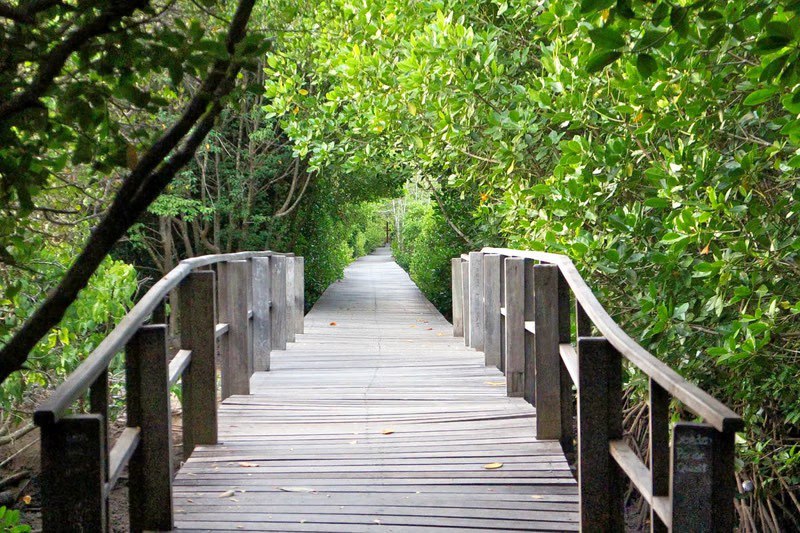Bali is famous for its pristine beaches, vibrant culture, and sacred temples, but one of its hidden gems often overlooked by travelers is the mangrove forest. A mangrove nature tour in Bali offers a completely different perspective of the island, where lush greenery, tranquil waters, and thriving ecosystems reveal another side of paradise. Exploring mangroves allows visitors to step away from the crowded tourist attractions and immerse themselves in a natural environment that plays a crucial role in maintaining the ecological balance of the island.
A mangrove forest is not just about trees and wetlands; it is a living sanctuary filled with unique trekking routes and diverse wildlife. For those who love eco-tourism, a mangrove nature tour in Bali combines adventure, education, and serenity, making it an unforgettable journey.
Why Choose a Mangrove Nature Tour in Bali
Choosing a mangrove nature tour in Bali is not only about sightseeing but also about appreciating the delicate relationship between humans and the environment. Mangroves act as natural buffers, protecting coastal areas from erosion, strong waves, and even tsunamis. They are also vital in absorbing carbon dioxide, making them essential in the fight against climate change.
For eco-conscious travelers, joining a mangrove tour means supporting conservation efforts while experiencing the charm of untouched Bali. Unlike the bustling beaches of Kuta or Seminyak, the mangrove forests provide peace, quiet, and a deeper connection to nature.
Trekking Routes in Bali’s Mangrove Forests
One of the highlights of a mangrove nature tour in Bali is the opportunity to walk along wooden boardwalks and trekking routes that wind through the dense forests. These paths are carefully designed to allow visitors to explore without disturbing the delicate ecosystem.
Sanur Mangrove Boardwalk
Located on the southeastern coast of Bali, near Sanur, this boardwalk is one of the most popular trekking routes for visitors. The trail takes you through tunnels of green where roots twist into the water, creating natural sculptures. The gentle sound of birds and the rustling of leaves accompany each step, making it a soothing walk for families, solo travelers, and nature enthusiasts.
Benoa Bay Mangrove Trek
Benoa Bay offers another famous mangrove trekking route. Here, visitors can enjoy both walking and canoeing along the waterways. The trekking route is slightly longer compared to Sanur and provides a more immersive experience. The elevated wooden paths bring you deeper into the forest, allowing closer observation of crabs, lizards, and small fish in the tidal pools below.
Secret Mangrove Paths
For those seeking a more adventurous journey, several hidden trekking routes exist in smaller mangrove areas across the island. Guided tours often include off-the-beaten-path trails where the forest feels untouched. These secret routes are perfect for travelers who want a sense of discovery and intimacy with nature.
Also Read: Gosip Vanessa Angel & Deddy Corbuzier Putus
Wildlife in Bali’s Mangrove Forests
Mangrove forests in Bali are alive with wildlife, making each tour an exciting opportunity to encounter different species. The combination of land, water, and air habitats allows for incredible biodiversity.
Birdwatching Paradise
Bali’s mangroves are a sanctuary for birdwatchers. Species such as kingfishers, herons, and egrets are commonly spotted gliding gracefully above the canopy or perched on branches. Migratory birds also use these forests as resting grounds, making it an ideal location for photography enthusiasts.
Reptiles and Amphibians
As you walk along the boardwalks, it’s common to see monitor lizards basking in the sun or small geckos darting between the leaves. Frogs and toads thrive in the damp environment, adding to the rich soundscape of the mangroves.
Aquatic Life
The shallow waters are teeming with marine life, from tiny crabs scurrying across the mudflats to small fish navigating the roots. These creatures form the foundation of the mangrove food chain, supporting larger species like herons and eagles.
Insects and Butterflies
Insects may be small, but they play a big role in the mangrove ecosystem. Colorful butterflies, dragonflies, and bees can be seen fluttering around flowers, contributing to pollination and maintaining ecological balance.
Also Read: Pacar Baru Jefri Nichol Terungkap
Best Time to Visit Mangrove Forests in Bali
The best time to embark on a mangrove nature tour in Bali is during the dry season, from April to October. The weather is sunny and less humid, making trekking routes more comfortable and waterways clearer for canoeing or kayaking. Early morning visits are highly recommended to avoid the heat while also catching glimpses of wildlife at their most active hours.
Tips for Exploring Mangroves in Bali
-
Wear comfortable clothing suitable for tropical climates.
-
Bring insect repellent to protect against mosquitoes.
-
Carry binoculars if you want to observe birds and other animals more closely.
-
Stay hydrated and bring reusable water bottles to reduce plastic waste.
-
Respect the environment by staying on designated paths and not disturbing wildlife.
Eco-Tourism and Conservation Efforts
By joining a mangrove nature tour in Bali, visitors also contribute to conservation efforts. Local organizations often use tour fees to fund mangrove restoration, research, and educational programs for local communities. Planting new mangrove seedlings is sometimes included in the tours, allowing tourists to leave a positive impact during their visit.
Also Read: Artis Nadira Dituding Sebagai Pelakor
Final Thoughts
A mangrove nature tour in Bali is more than just a journey through forests; it is an exploration of life, balance, and the resilience of nature. The trekking routes provide adventure, the wildlife offers wonder, and the conservation efforts remind us of our responsibility to protect these ecosystems. Whether you are a first-time visitor to Bali or a returning traveler, stepping into the mangroves will give you a deeper appreciation of the island’s natural treasures.
